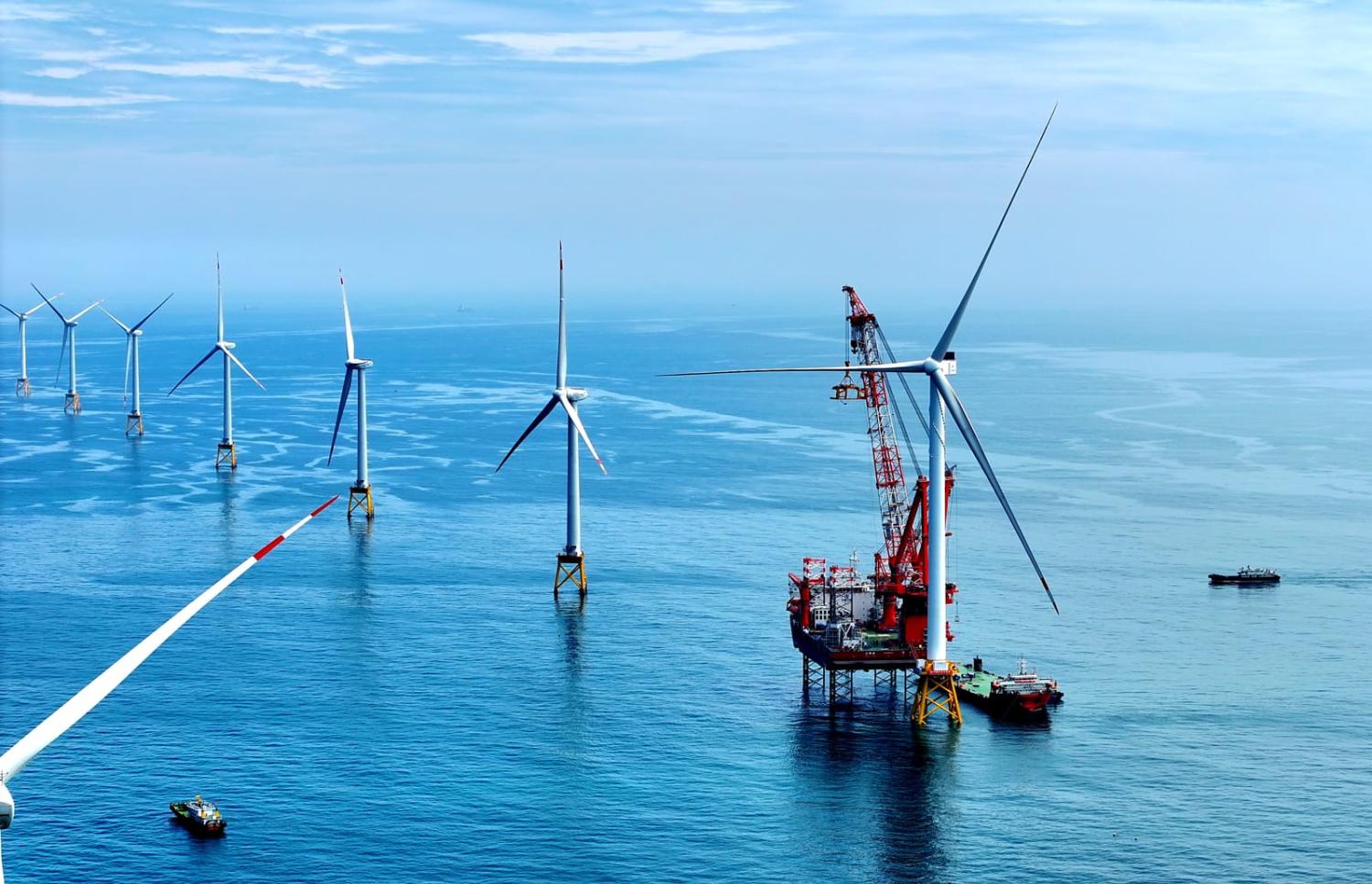Military considerations are slowing China’s offshore wind energy deployment. The coastal province of Fujian, just opposite Taiwan, is critical to the Chinese People’s Liberation Army (PLA) Eastern Theatre Command, which is responsible for major operations against Taiwan, but also where China’s offshore wind resources are most abundant. The province is a relative laggard in offshore wind deployment, however, suggesting that Fujian’s approach to juggling national defence and energy security reveals inherent tensions in President Xi Jinping’s hallmark “comprehensive national security concept.”
China’s offshore wind strategy, conditions, and constraints
China’s offshore wind industry is a key element in its developmental, energy security, and national security strategies. The nation’s offshore wind push has largely been focused on mastering key technologies in wind farm design, construction, and operation, and securing the manufacturing supply chain of key offshore wind turbine components.
While provinces in China own the rights to develop maritime resources along their coastlines and have individual installation targets to meet, not all coastal provinces are pursuing offshore wind with the same vigour, owing to resources, policy, or both.
China’s coastal provinces are well-positioned to take advantage of offshore wind due to energy and economic fundamentals. Strong offshore wind speeds across China bolster project economics. Meanwhile, Chinese coastal provinces, especially in the south, possess relatively weak solar and onshore wind potential, are far from domestic coal and natural gas production, and suffer from onshore space constraints, making offshore wind more attractive.
The Chinese province of Jiangsu has already installed nearly 12 Gigawatts (GW) of offshore wind capacity. Guangdong province has set an ambitious goal of installing 30 GW by 2030, while Shandong aims to reach 35 GW. Fujian, meanwhile, has less than 3 GW of capacity in operation, putting it in fourth place out of all provinces. It also lacks ambition in adding new capacity to a total of 13.3 gigawatts (GW) by 2030 and has been slow in devising clear policies to attract private capital to develop its offshore wind development.
Fujian enjoys the country’s most favourable offshore wind speeds, while its bathymetry (that is, water depth) is well-suited for fixed-bottom offshore wind turbines, which are cheaper than floating structures. On the other hand, some analysts maintain that the province’s offshore wind potential is constrained by typhoons, as well as a rocky seabed, which could complicate the siting of turbines. But these are not the most important reasons for the province’s underutilisation of offshore wind resources.
There is evidence that military factors, not techno-economics, are the key constraint for Fujian's offshore wind complex. Fujian’s proximity to Taiwan, as well as the outlying Taiwan-controlled islands of Matsu, Quemoy, and Kinmen, restricts suitable deployment areas and increases the chance that wind turbines conflict with military activities. Other navies, including the US military, are reluctant to site turbines near sensitive military locations due to their operational implications, including for radar.
Finally, the Chinese Wind Energy Association, an industry group, stated in its explainer of Fujian’s 14th 5-Year plan that the province’s highest offshore wind priority is to safeguard national defence. The balance of evidence suggests that national security considerations have severely constrained Fujian’s offshore wind development.
Fujian’s offshore wind deployment sustains Beijing’s credible threat to Taiwan
The PLA’s needs in a potential military conflict over Taiwan have forced Fujian to adjust its offshore wind industry and decarbonisation strategies to accommodate defence priorities. Xi has repeatedly vowed to “reunify” with Taiwan and according to US intelligence assessments ordered the military to be ready to invade Taiwan by 2027. The PLA’s regional bases often overlap with Fujian’s offshore wind energy potential, creating constraints and dilemmas for scaling the province’s offshore wind potential. As military drills and exercises around Taiwan have become more commonplace, to speed up PLA readiness, warships, warplanes, and other military assets have been frequently sighted off Fujian’s coast.
Fujian’s sluggish offshore wind deployment is most likely due to the PRC’s political-military objectives, not techno-economic constraints. Constraining Fujian’s offshore wind makes the PRC’s military threats to Taiwan more credible, but it also harms China’s energy security and developmental interests. Beijing’s offshore wind strategy serves as yet another reminder that military planners, policymakers, and publics need to take the threat of PRC coercion against Taiwan seriously.
Joe Webster is a senior fellow at the Atlantic Council and editor of the China-Russia Report. Zoe Leung is senior director of research at the George H. W. Bush Foundation for US-China Relations. This article represents their own personal opinion.

